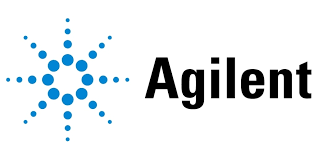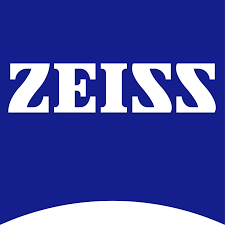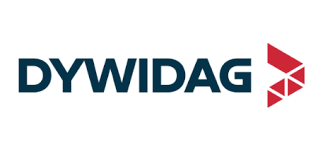Self Healing Roads Market
Published Date: 25 August 2025 | Report Code: self-healing-roads-market
Self Healing Roads Market Market Size, Share, Industry Trends and Forecast to 2033
This report offers an in‐depth exploration of the Self Healing Roads Market, providing key insights into current market conditions, technological innovations, and future trends spanning from 2024 to 2033. It combines extensive data analysis and expert forecasts, enabling stakeholders to gain a comprehensive understanding of market dynamics and potential growth opportunities.
| Metric | Value |
|---|---|
| Study Period | 2024 - 2033 |
| 2024 Market Size | $1.50 Billion |
| CAGR (2024-2033) | 6.8% |
| 2033 Market Size | $2.76 Billion |
| Top Companies | Innovative Roads Inc., Smart Pavement Solutions, Sustainable Infrastructures Ltd. |
| Last Modified Date | 25 August 2025 |
Self Healing Roads Market (2024 - 2033)
Self Healing Roads Market Market Overview
Customize Self Healing Roads Market market research report
- ✔ Get in-depth analysis of Self Healing Roads Market market size, growth, and forecasts.
- ✔ Understand Self Healing Roads Market's regional dynamics and industry-specific trends.
- ✔ Identify potential applications, end-user demand, and growth segments in Self Healing Roads Market
What is the Market Size & CAGR of Self Healing Roads Market market in {Year}?
Self Healing Roads Market Industry Analysis
Self Healing Roads Market Market Segmentation and Scope
Tell us your focus area and get a customized research report.
Self Healing Roads Market Market Analysis Report by Region
Europe Self Healing Roads Market:
Europe showcases a robust market presence with figures climbing from 0.41 in 2024 to 0.75 by 2033. The region benefits from stringent environmental regulations and a high level of technological sophistication. Governments and stakeholders in Europe are increasingly adopting self-healing solutions to minimize road maintenance disruptions and to promote environmentally responsible infrastructure solutions.Asia Pacific Self Healing Roads Market:
In the Asia Pacific region, the Self Healing Roads Market is witnessing promising growth, with market size expanding from 0.32 in 2024 to an expected 0.59 by 2033. This region benefits from rapid urbanization, increased government initiatives, and substantial investments in smart infrastructure projects, making it a key growth driver. The focus on modernizing transportation networks and addressing environmental challenges further reinforces the adoption of self-healing technologies.North America Self Healing Roads Market:
North America remains a substantial contributor to the Self Healing Roads Market, with market size figures of 0.51 in 2024 growing to 0.93 by 2033. The region’s strong emphasis on infrastructure resilience, coupled with significant government funding and innovative repair technologies, drives continuous advancements. Strategic investments in research and development further enhance market competitiveness and long-term sustainability.South America Self Healing Roads Market:
The South American market, albeit smaller in scale with figures starting at 0.09 in 2024 and growing to 0.17 by 2033, shows significant potential. The region is gradually modernizing its infrastructure, aided by both public and private sector efforts. Although the investment volumes are comparatively less than in other regions, the scope for technology adoption and infrastructural upgrades continues to grow steadily.Middle East & Africa Self Healing Roads Market:
The Middle East and Africa region, with a market size of 0.17 in 2024 expected to increase to 0.30 by 2033, is gradually embracing self-healing road technologies. While the market is still emerging, the focus on infrastructural modernization and the need to reduce maintenance costs drive adoption. Increased public-private partnerships and policy reforms are likely to spur growth in the coming years.Tell us your focus area and get a customized research report.
Self Healing Roads Market Market Analysis By Material
Global Self-Healing Roads Market, By Material Market Analysis (2024 - 2033)
The material segment is a critical component of the Self Healing Roads Market. This division is primarily concerned with the evolution of materials that facilitate self-healing capabilities. Key constituents include bituminous materials, cementitious materials, and additives. Bituminous materials alone represent a significant portion of the market, holding a share of 66.94% from 2024 and are projected to maintain this level due to their superior performance in creating durable road surfaces. Cementitious materials and additives complement these by providing structural integrity and enhanced performance. Continuous research into nanomaterials and polymer modifications further bolsters the material segment, ensuring consistent improvements in self-repair efficiency.
Self Healing Roads Market Market Analysis By Repair Technique
Global Self-Healing Roads Market, By Repair Technique Market Analysis (2024 - 2033)
The repair technique segment differentiates into autonomous and active repair techniques. Autonomous repair methods, which hold a commanding market share of 82.73%, incorporate advanced sensor technologies and AI-driven systems to monitor and initiate repairs instantaneously. These techniques minimize human intervention and reduce downtime, resulting in optimal operational efficiency. Active repair techniques, while representing a smaller share of 17.27%, play a crucial role in scenarios where controlled manual intervention is required. Investments in R&D continue to bridge the performance gap between these techniques, ensuring that both approaches contribute effectively to market growth by addressing distinct infrastructural challenges.
Self Healing Roads Market Market Analysis By Application
Global Self-Healing Roads Market, By Application Market Analysis (2024 - 2033)
The application segment is divided into highways, urban roads, airports, and bridges. Highways and urban roads together dominate market share with figures reflecting the critical need for traffic resilience and long-term durability. Highways account for 57.25% of the market share due to their extensive use and high maintenance requirements, while urban roads also represent a significant portion, emphasizing the need for smart city solutions. Airports and bridges, though smaller in absolute market size, are vital in ensuring continuous operation and safety in specialized infrastructural projects. Each application area is tailored to address unique stress factors and environmental conditions, driving specific innovations tailored to these domains.
Self Healing Roads Market Market Analysis By End User
Global Self-Healing Roads Market, By End-User Market Analysis (2024 - 2033)
End-user segmentation includes government bodies, private sectors, contractors, and other stakeholders. The government sector is predominant, with a market share of 57.25% and a significant size increase from 0.86 in 2024 to an anticipated 1.58 by 2033. This is largely due to public funding and policy mandates that favor sustainable and cost-effective maintenance solutions. The private sector and contractors, although contributing smaller shares (24.71% and 9.95% respectively), are also investing steadily in these innovative technologies. These diverse end-user groups collectively drive market demand, reflecting varied priorities from budgetary restraints to enhanced performance metrics.
Self Healing Roads Market Market Analysis By Geographical Approach
Global Self-Healing Roads Market, By Geographical Approach Market Analysis (2024 - 2033)
The geographical segmentation distinguishes between developed and emerging markets. Developed markets, contributing approximately 82.73% of the market share, benefit from advanced technological infrastructures and robust funding mechanisms, resulting in a projected size growth from 1.24 in 2024 to 2.28 by 2033. Emerging markets, though currently representing 17.27% of the share, show promising growth potential as these regions continue to modernize their infrastructures and adopt innovative self-healing solutions. This dual-approach strategy allows stakeholders to tailor their investments and technology transfers to regions based on maturity, fiscal budgets, and infrastructural exigencies.
Self Healing Roads Market Market Trends and Future Forecast
Tell us your focus area and get a customized research report.
Global Market Leaders and Top Companies in Self Healing Roads Market Industry
Innovative Roads Inc.:
Innovative Roads Inc. is recognized globally for pioneering self-healing materials and integrated infrastructure solutions. Their commitment to R&D and sustainability has positioned them as a leader in deploying both autonomous and active repair techniques across multiple regions.Smart Pavement Solutions:
Smart Pavement Solutions specializes in the development of sensor-equipped road systems and smart repair technologies. Their advanced AI-driven systems are instrumental in reducing maintenance downtime and extending the lifespan of road networks.Sustainable Infrastructures Ltd.:
Sustainable Infrastructures Ltd. leverages cutting-edge research in nanotechnology and polymer science to produce durable self-healing road surfaces. Their solutions are widely adopted in both developed and emerging markets, ensuring efficient infrastructural management.We're grateful to work with incredible clients.









FAQs
What is the market size of self Healing roads market?
The self-healing roads market is projected to reach a size of $1.5 billion by 2033, growing from approximately $1.1 billion in 2024. It is expected to exhibit a compound annual growth rate (CAGR) of 6.8% throughout the forecast period.
What are the key market players or companies in this self Healing roads market industry?
Key players in the self-healing roads market include major construction companies and innovative material suppliers that focus on sustainable infrastructure solutions. These companies are actively engaged in R&D to enhance road durability and repair capabilities, driving competition and advancements in the market.
What are the primary factors driving the growth in the self Healing roads industry?
Growth in the self-healing roads industry is driven by increasing infrastructure spending, technological advancements in road materials, the need for sustainable construction practices, and a growing emphasis on road durability and maintenance efficiency. These factors collectively enhance the market's appeal.
Which region is the fastest growing in the self Healing roads market?
The fastest-growing region in the self-healing roads market is North America, projected to increase from $0.51 billion in 2024 to $0.93 billion by 2033. This region benefits from significant investments in reconstructing aging infrastructure and implementing innovative road technologies.
Does ConsaInsights provide customized market report data for the self Healing roads industry?
Yes, ConsaInsights offers customized market reports tailored to specific requirements in the self-healing roads industry. Clients can obtain data that targets their unique needs, ensuring relevant insights are delivered for strategic planning and decision-making.
What deliverables can I expect from this self Healing roads market research project?
Deliverables from the self-healing roads market research project include comprehensive market analysis reports, segmentation data, competitive landscape details, industry trend insights, and regional growth forecasts. These reports are designed to support informed business strategies.
What are the market trends of self Healing roads?
Market trends in the self-healing roads industry include increasing adoption of advanced materials like bituminous and cementitious options, leveraging autonomous and active repair techniques, and a heightened focus on sustainable practices. These trends reflect the industry's evolution toward innovative road maintenance solutions.
